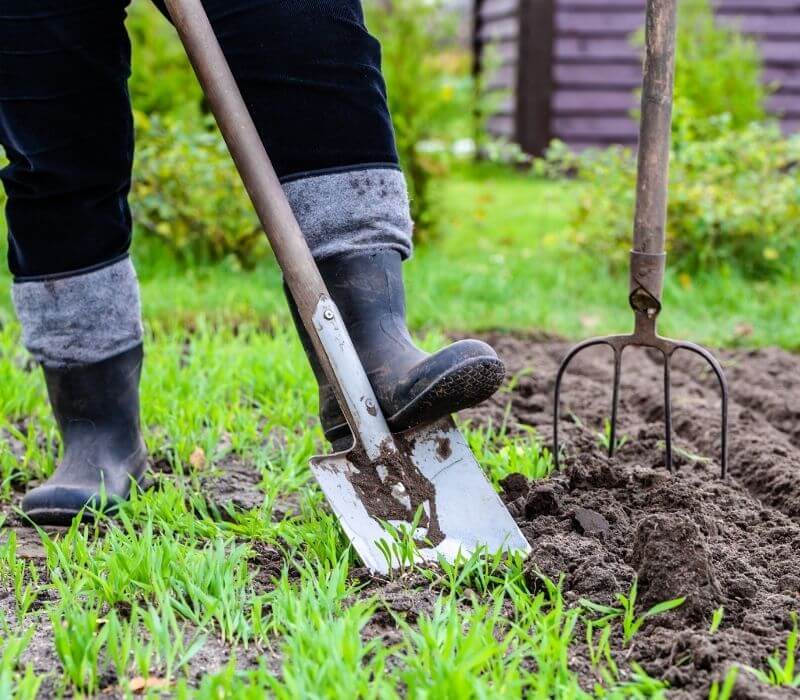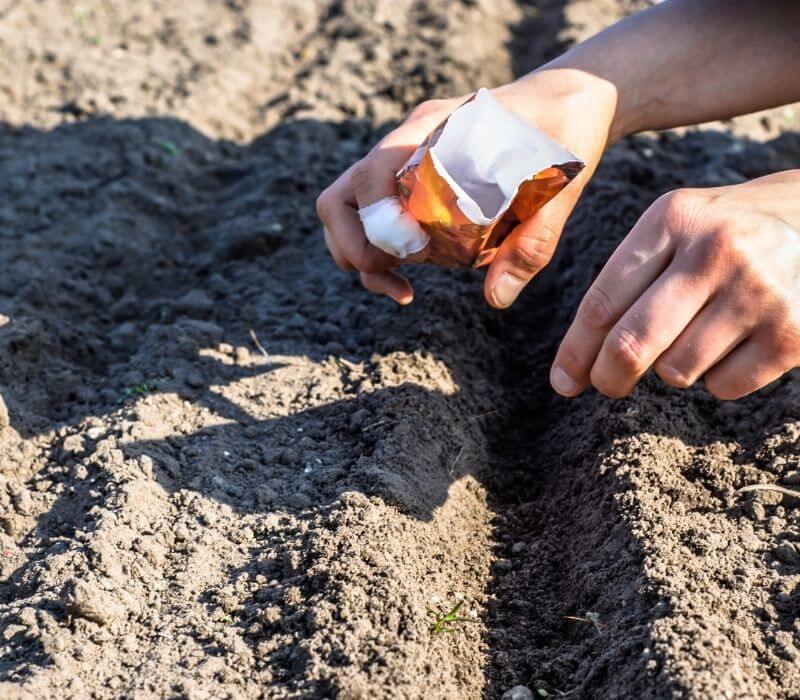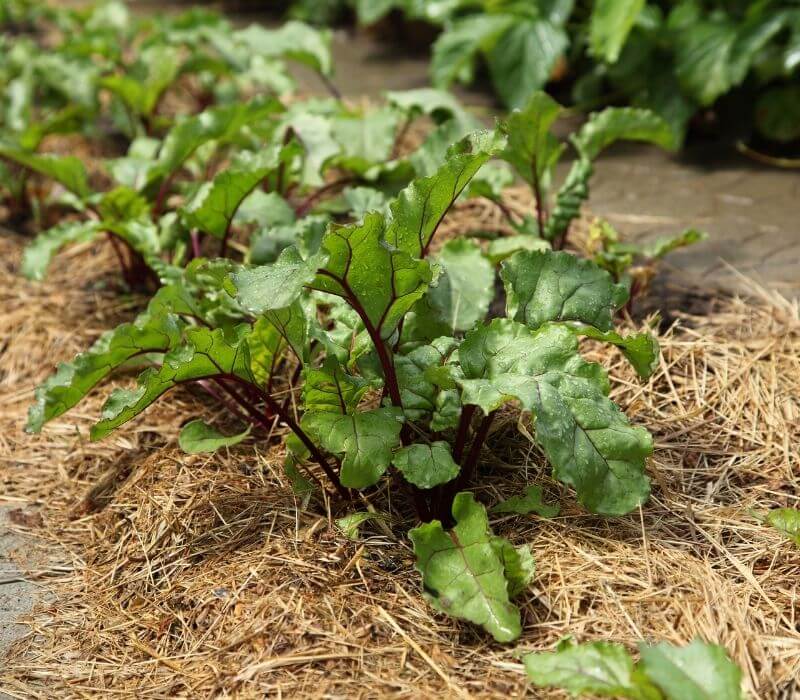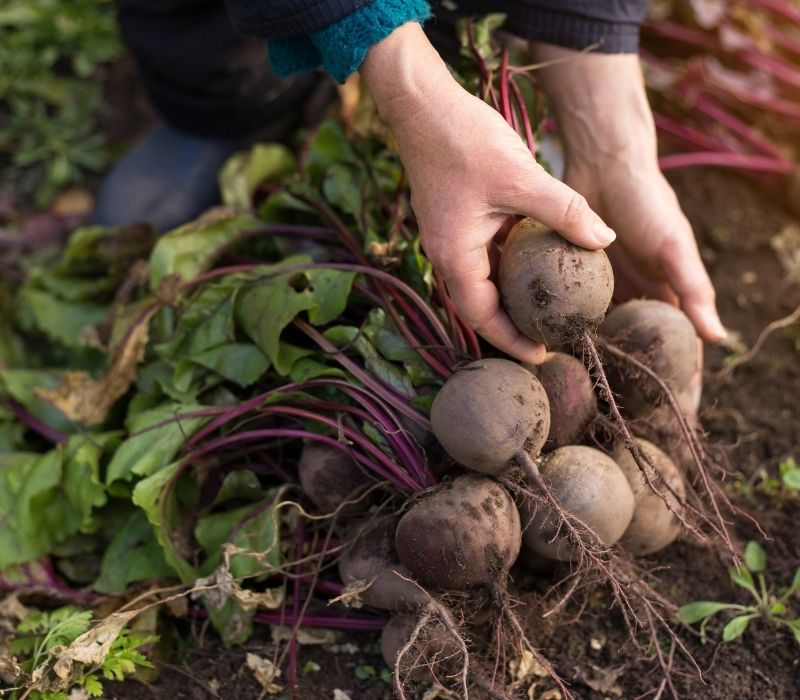Learning how to grow beets is a skill every homesteader should have in their arsenal. Besides being nutritious, beets are fast maturing and require low maintenance, making them ideal for beginners to try.
RELATED: 9 SPRING VEGETABLES FOR YOUR GARDEN
How to Grow Beets in Four Easy Steps
Things You'll Need
Tools You'll Need
Step 1. Preparing the Soil

A large part of preparing the soil includes spotting the perfect spot to plant your beets. Your beetroot plants will be happy in the sunniest spot in your garden. Ideally, beets should get at least six hours of sunlight daily.
Next, use a pH thermometer to ensure that the soil in your preferred site lies between 6.0 and 7.0. This is the ideal acidity level, but beetroots can tolerate a little more alkalinity in soils. Steer clear of soil with pH levels below 6.0, however.
Next, use a garden fork to work in several inches of organic compost. Once the site soil is perfectly amended, use a rake to even it out and break any clods so that the soil is loose and light. A rake will also help you identify rocks or other solid objects you need to remove from the planting site.
Tip: You can also choose to plant your beets in a planter as long as you ensure they don't dry up.
Step 2. Sowing Beetroot Seeds

Here, make several rows, one foot apart, on your prepared planting site. Next, use a small stick to make half-inch holes at one to two inches apart on the rows and sow your beetroot seeds. Cover the sowed seeds with a thin layer of soil.
Note: A single beetroot seed is a cluster of two to four other seeds. Therefore, thinning your four-inch-tall green seedlings to three or four inches apart allows the remaining roots to grow to a healthy size.
Alternatively, you can opt for “monogerm” beetroot varieties that produce one seed per capsule. This way, you will not need to snip off the extra seedlings. Add fertilizer amendment to the soil at this stage if you did not use organic compost.
Tips:
- Since beets germination can be patchy, feel free to pop new seed capsules if you notice any gaps after germination.
- Using a row cover or a cold frame to pre-warm the soil will increase your chances of getting uniform germination. This helps keep the soil moist during the germination period.
- To speed up germination, consider soaking the seeds for at least 24 hours before planting.
- Similarly, use a sharp knife, scissors, or sheers during thinning. Pulling out the unwanted seedlings may disturb the roots of the plant you want to keep.
RELATED: 13 Fastest Growing Vegetables That You Should Plant In Your Garden
Step 3. Cultivate the Beets

Throughout the growing period, add a thin layer of mulch around the beets. Grass clippings are great, especially if you do not use any herbicides on your lawn. These will help add small amounts of nitrogen to the soil that will be beneficial to the beet.
Similarly, water regularly with at least an inch per square foot of water each week. Moisture is crucial for healthy beetroot development.
Consequently, weed as required but be careful as young beets have shallow roots that you can easily disturb and possibly harm. In addition to mulching, a row cover throughout the growing period will help maintain moisture while preventing pests from attacking your bits.
Step 4. Harvest the Beets

Most beetroot varieties are ready for harvesting roughly two months after planting. However, you can harvest the roots at any size that suits you be it baby bulbs or golf-ball size. Avoiding leaving the beets in the ground too long as the larger the bulb gets, the tougher and woody it becomes.
Firstly, loosen the soil around the beet bulb with your hands. Next, hold all the stems in one hand and gently pull them off the ground. This way, the beets will easily come loose, but you can cautiously use a garden fork for leverage.
Note: You can also harvest the beet leaves anytime. Ensure that only take one or two mature leaves from each plant. Taking more than these will lead to stunted growth in the beets.
Tip: Trimming the leaves or roots after harvesting will only cause a big mess.
Watch this video by Healthy Life Choices on the best way to store beets:
There you go, homesteaders. With this detailed breakdown, growing beets in your garden or even planters have never been easier. What's more, you get a constant supply of this high fiber vegetable. Also, you get to plant beets all year round.
Have you planted beetroot before? What pointers would you like to share with us? Let us know in the comment section below!
Up Next:
- Fall Harvest Crops | 23 Vegetables To Grow This Season
- How To Blanch Vegetables Before Freezing
- How To Make A DIY Shaving Cream In 5 Minutes
Fellow homesteaders, do you want to help others learn from your journey by becoming one of our original contributors? Write for us!

Great resource. Thank you.
can I grow the beetroot in 3×4 feet garden and which soil is best for it